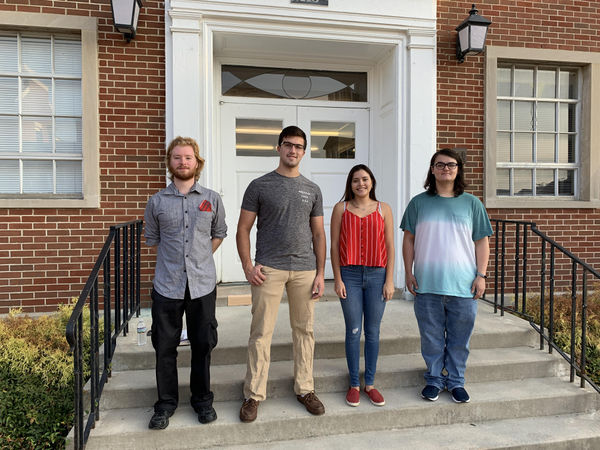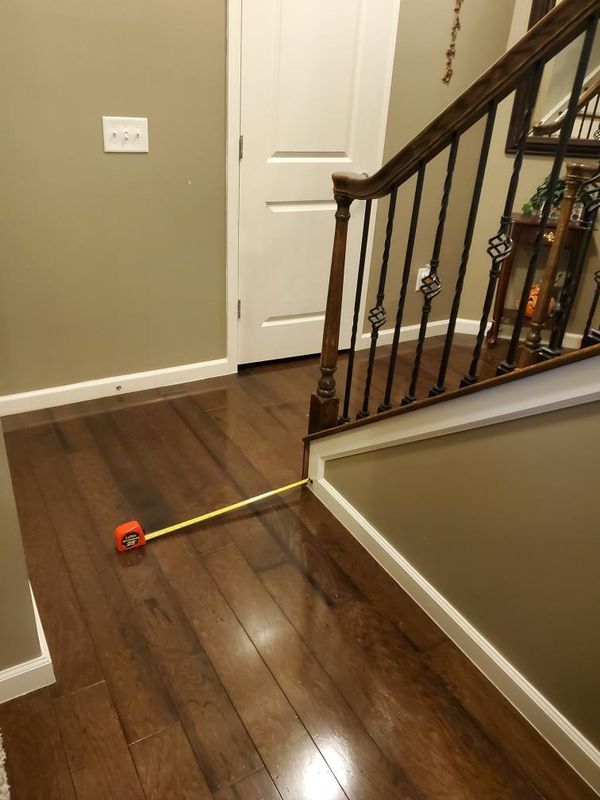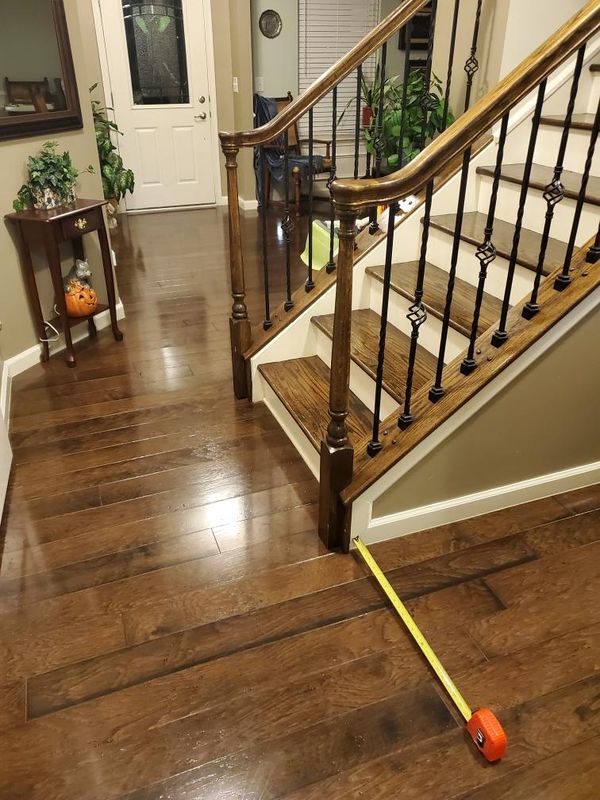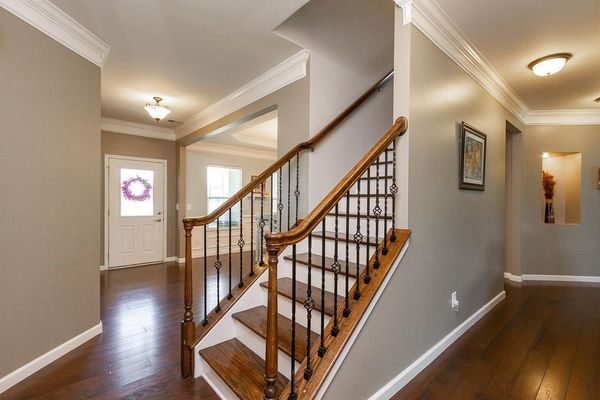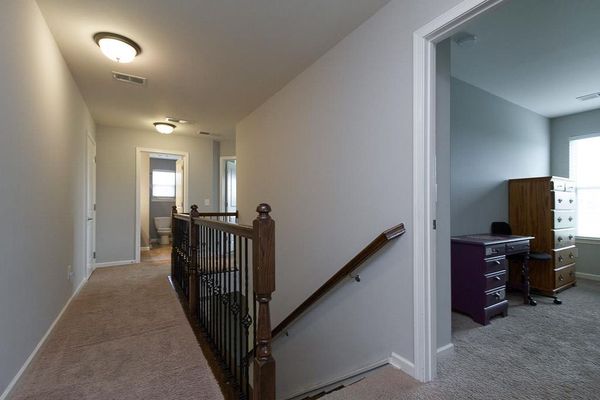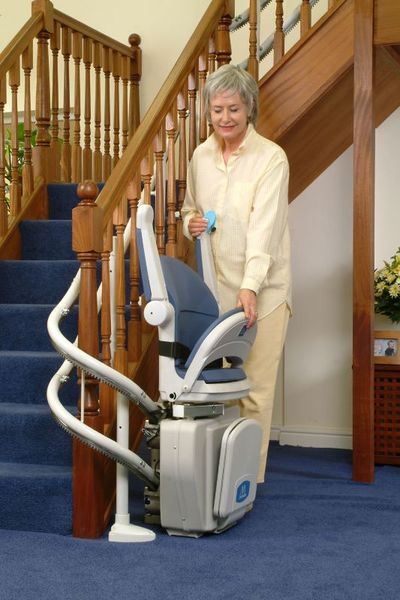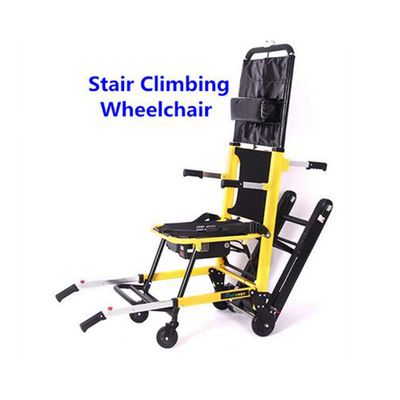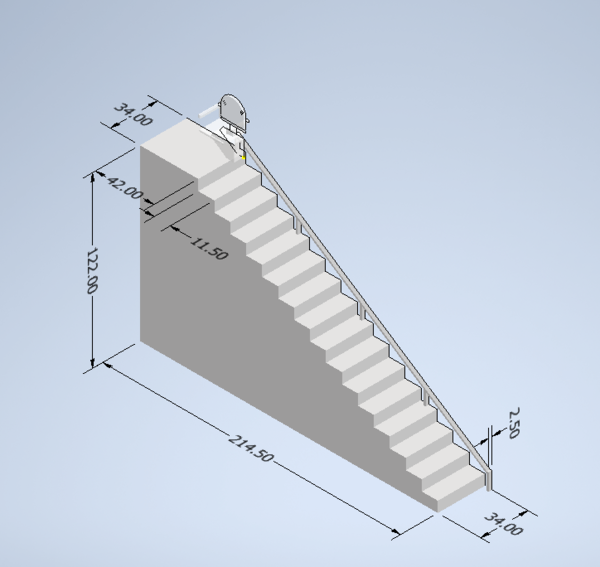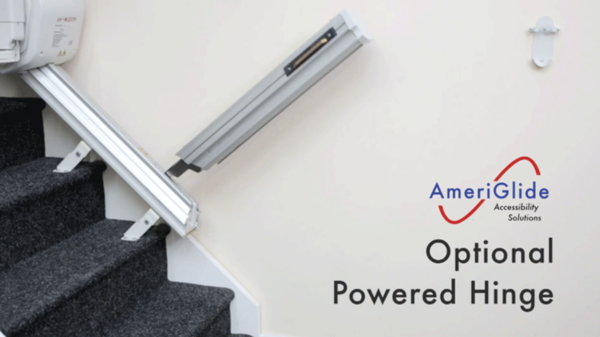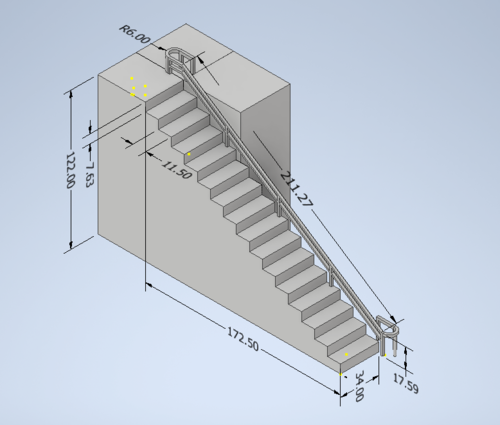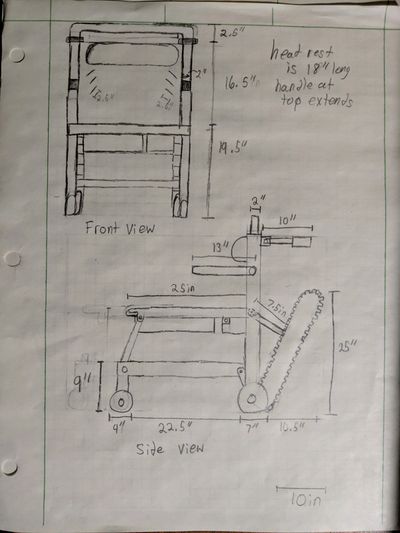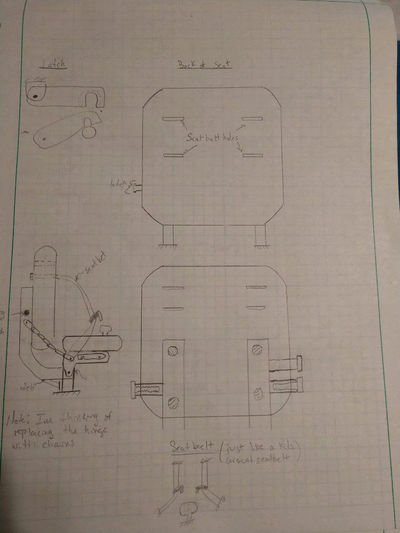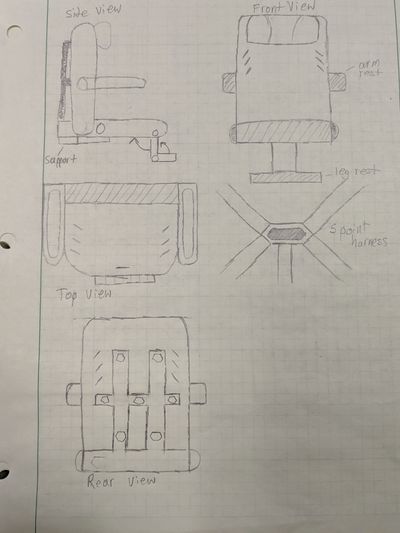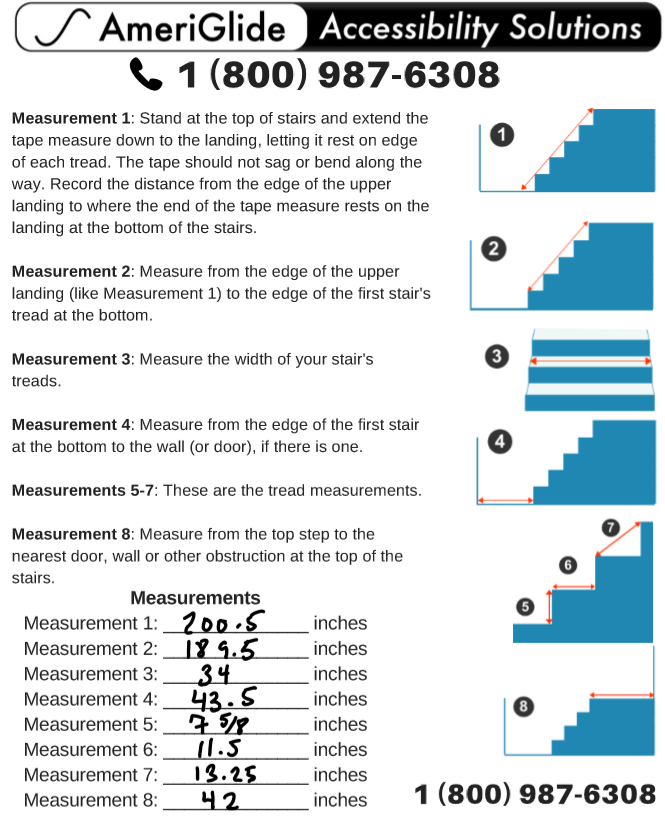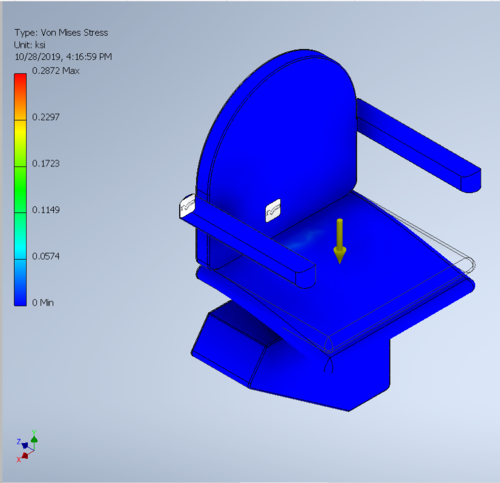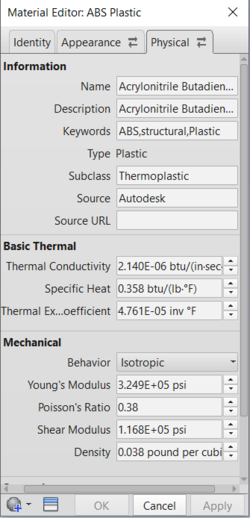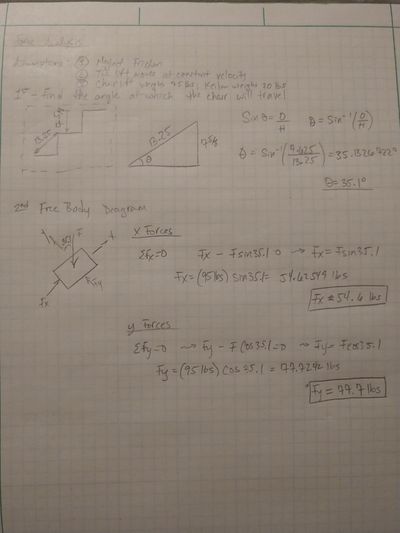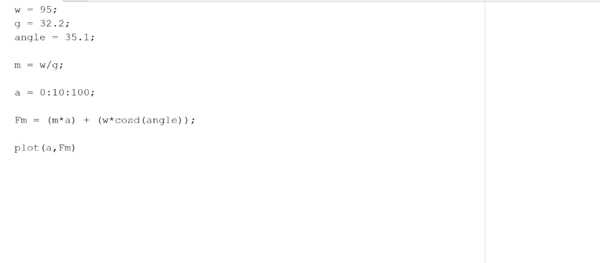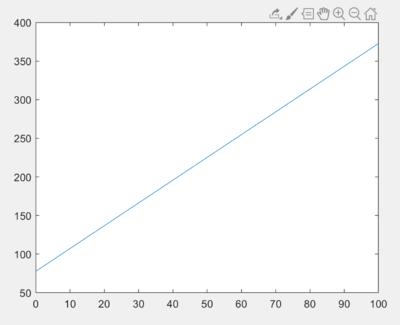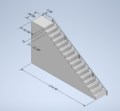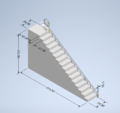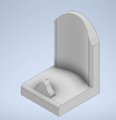Stair lift
Abstract
The client has spastic, quadriplegic, cerebral palsy. He needs a modified chair lift that can take him up and down the stairs. It has to be a fully supported chair because he is unable sit up.
Team members
- From left to right: Davis Collins, Caleb Dean, Carla Soruco, Patrick Swiecichowski
Problem Statement/overview of the need
The client is a 2-year old child that has spastic, quadriplegic, cerebral palsy. His mom has to carry him and his 4-months old sister up and down the stairs multiple times a day. Moreover, he is going to keep growing and getting heavier as time goes by. This will make it harder for his mom to keep carrying him. Back pain is already a problem for the mother, and this is only making it worse. The family would love a design that would aid in transporting the child up and down the stairs. To our knowledge no modified chair exists for children like him, as he cannot sit up by himself. He needs a modified chair that can fully support him and that can be adjusted as he grows.
Another issue that should be noted is that of space. There is very little area at the base of the stairs. Additionally, the Child's Great Grandmother frequents this path by wheelchair. Hence, an ideal design should accommodate for such limited space at the base of the stairs. In addition, the stairs are narrow. Therefore, the design solution may require additional features to accommodate.
Design Specifications
- The design must have a chair with several belts that can support him from going side to side and that can support his chest.
- Ideally the design would have a headrest with a small indentation where he can rest his head without going side to side.
- The design must have a foldable chair so it won't take much space on the stairs.
- The design must include adjustable belts/positioning to accommodate the childs growth over time.
- The lift need to be "child-proof", such that he cannot operate it on his own. Solution: Remote Controlled
Background research
There are many different kinds of stairlifts available on the market. The figure shown below is a foldable stairlift that wraps around the railing at the bottom which is similar to what we will consider designing for our client. The family has considered purchasing an in home stairlift. However, to our knowledge, there is no company that manufactures chairlifts designed to meet disabled children's needs. As mentioned above our client is a 2-year old child that needs full support because he cannot sit up by himself. Moreover, our design will also include adjustable belts/positioning so our client will be able to use this chair for several years.
The image seen below is a stair climbing wheelchair. This wheelchair has a motor which allows it to climb up and down the stairs via knobby tracks. The speed is controllable which keeps the patient and responder safe. The responder has to incline the chair until the tracks are completely touching the stairs and after turning on the motor, they just have to slightly pull the chair up. Same thing has to be done on the way down.
Conceptual Design
Design Concept 1
This will cover many of the childs needs. The chair will pivot at the top, such that the guardian will not have to unload the child on the stairs. Additionally,the chairlift will feature a power hinge rail, which will overcome the issue of limited space at the base of the stairs. (An image of the rail is shown below.) This will also allow the child to be loaded/unloaded at the base below the stairs. This feature will also allow an additional measure of safety.
Design Concept 2
This design is to scale with the staircase in the house. The railing is curved at the ends to make it easier to store the stair lift. This makes it easier for people to go up and down the stairs since they do not have to go around the lift itself. This also allows the grandmother, who is in a wheelchair, to still get past the staircase without having to go around the whole thing. The only downside is the price of this design, since it incorporates curved railing, the companies that provide the stair lift require for them to measure and install it themselves, and the curved rails increase the price.
Design Concept 3
This is a third option that we investigated which is a mobile stair lift. This mobile stair lift can go up stairs and takes most if not all the load off the person pushing the chair using the motorized treads that are attached at the back of the chair. The dimensions were based off those of a wheelchair since there were not any sources that would give dimensions about the chair. It operates like a wheelchair except when you need to go up or down the stairs, in which case it you would adjust the treads to roughly the same angle as the stairs and turn on the motor using the corresponding button for going up or down the stairs. The person not in the chair still need to put some force on the chair so that it stay back against the stairs as the person is going up or down. The down side to this is that it still requires someone there to operate the chair for the person in the chair, and that it is around the same price as a straight stair lift if you wanted to buy a new one.
Chair Designs
Evaluate concepts/select candidate
Concept 1
Pros
-Reasonably Priced
-Self Installation
-Excellent Hallway space, featuring the Power Hinge Rail
-Moderately safeloading/unloading of the child - Loading/unloading on the main floor, not stairs
Cons
-limited stairway space
Comments: This design is a straight forward approach that seems to be fairly reasonable. Being able to measure/self install the unit will reduce the cost by $725. While this design doesn't meet all of the families wants, it exceeds their needs. Loading and unloading the child will be moderately safe, as the chair will swivel at the top of the stairs, and lower him to the base of the stairs.
Concept 2
Pros
-Excellent stairway space
-Very Safe loading/unloading of the child-Child removed far from the stairs for unloading/loading
Cons
-Very high cost
-mildly limits hallway space
-self installation option not available
Comments: This design is much more complex, as it requires 2 rails for the chair to run along and 2 180 degree turns. This meets many of the familys wants, and exceeds their needs. The only want this doesn't suffice is the mildly limited hallway space.
Concept 3
Pros
-Very cost effective
-Eliminates the worry of limited space
Cons
-Mother would have to physically operate it
-Extreme Safety concerns, considering that it would take 2 people operating it to ensure safety
Comments: This design would be fairly complex, considering the engineering analysis that would have to be taken into account for the design. It should also be noted that this design would create a growing safety issue for the child, as he grows.
Also, there is the need to evaluate which seat design would be best for the situation at hand. The second seat design, design concept 2, is similar to the first design only that there is supports under the seat compared to a chain. This idea could work since it will take into account Kelan's needs of a five point harness and a feasible way to get up the stairs even though it is just a modification of a chair lift seat. The straps will keep him from falling out of the chair and support him as he goes up the stairs.
Upon consideration, and input from the family we have chose to pursue Design Concept 1. It suits the families needs, and satisfies many of their wants, all while maintaining economical.
Detailed Design
This section will describe a detailed design process
Description of selected design
The family chose to pursue Design concept 1. This design accounts for the family's needs and satisfies many of their wants, all while remaining economical.
Detailed description of selected design
The selected stairlift is, specifically, an Ameriglide brand Horizon Plus (https://www.ameriglide.com/item/ameriglide-horizon-plus-stair-lift.html) It includes an extra three feet of railing, an extra rail joint kit, and three extra rail legs. Additionally, this design includes a power hinged rail which folds upward in order to provide extra stairway clearance for when the chair is not in use. We will install the stairlift. However, AmeriGlide will complete an inspection to ensure that everything has been properly assembled. The lift comes with two wireless call-send remotes; along with a retractable reel seat belt, a digital diagnostic display, and a key lock. The stair lift will go on the right side (with the perspective of facing up the staircase) of the stairway.
The staircase measurements, and their detailed description are shown in the image below.
Analysis
Describe three types of analysis to be performed on the design
Engineering analysis 1
Our first Analysis was on the stress put on the seat of the stair lift chair when the customer sits on the seat. After making the chair in Auto-cad and transferring it over to Inventor we were able to do a stress analysis on the chair. From our research we knew that the chair would mostly be made out of a hard plastic and so we chose a hard plastic, ABS plastic to be precise. We applied a force to the seat and ran the simulation and the result was created. We did this with many different forces and materials to compare the results since the deflection seems a bit extreme, but each one had the same amount of deflection for the seat. So we believe that this is a mild exaggeration of the deflection to let users know that the part would deflect to a certain extent. This being said the results were pleasing since the amount of stress inflicted did not get close to the maximum sheer stress that the plastic could take.
Engineering analysis 2
This analysis was done to determine the force the components will have to withstand at any given time, during constant velocity or equilibrium, in their respective directions. It should also be noted that the slider has to be able to withstand force in all 3 directions. Many are only made to withstand force in the y-direction.
Engineering analysis 3
CAD Drawings
Bill of Materials
qty, item, description, source, part number, price
Note: All of these parts are from AmeriGlide
Total Cost: $3,484
Below is the cost of the materials for the modification.
Assembly Instructions
Fabrication Process
Insert pictures of fabrication process
Testing and implementation
Describe testing, delivery, how used/received by the family
Photos of Completed design
Insert pictures of the final product
Instructions for safe use
Provide a clear summary of safe use for the family. Do not use the device unless supervised by an adult that has been fully understood the safe use of this product.
Project Summary, Reflection
The family was overjoyed with our concepts and product, but due to the recent idea that the family might move in the near future as well as other circumstances, the family decided to not to go through with the project. The fact of having a the product permanently installed when they might move in a year or so is not very cost effective on their side of things.
